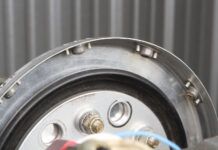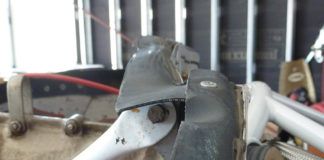 Question: I built and fly my Zenith CH 701. I am planning on changing the propeller. What does the FAA require with respect to forms, notification, and procedures to change props?
Question: I built and fly my Zenith CH 701. I am planning on changing the propeller. What does the FAA require with respect to forms, notification, and procedures to change props?
Answer: This question fits in with others I get concerning making major changes on an amateur-built aircraft.
As with so many other questions, the answer can be found right in the Operating Limitations that were issued as a part of your airworthiness certificate.
There should be a paragraph that addresses incorporating a major change as described in part 21.93. Part 21.93 states that a minor change is one that has no appreciable effect on the weight, balance, structural strength, reliability, operational characteristics, or other characteristics affecting the airworthiness of the product. All other changes are major changes. The changing of a propeller can be either a minor change or a major one depending on the propeller. If you are changing to a different prop of the same construction, diameter and pitch, then the change would be minor as you would simply be replacing the propeller. I assume (I know, a bad thing) that you are changing one of these three factors. A propeller with different type of construction, diameter or pitch would definitely change the operational characteristics of your aircraft and therefore would constitute a major change.
After incorporating a major change the aircraft owner is required to reestablish compliance with part 91.319(b) and notify the geographically responsible FSDO of the proposed test area.
If the major change includes a change of a fixed pitch from or to a controllable propeller, the aircraft owner must fill out a revised 8130-6 to update the aircrafts file in the FAA aircraft registry. Basically what this does is allow the owner to incorporate the change, make a detailed logbook entry and place the aircraft back into Phase I himself. The new Phase I test period must be for a minimum of 5 hours. After testing is completed, the pilot will enter the same statement as for the original Phase I sign off.
Any time it is questionable as to whether you have a minor or major change, it is better to err on the side of major. If a problem occurs and insurance gets involved, a minor change treated like a major change will not be a factor. On the other hand, a major change treated like a minor one can mean the difference between a paid claim and a denial of coverage.
I need to reiterate that this answer relates to the latest version of operating limitations. The context of operating limitations has changed over the years, and you are bound by your particular limitations. My records show that your operating limitations were issued in September of 2002, so this answer should apply.
Other aircraft owners should be aware that operating limitations issued prior to the late 1990s typically require a recurrent airworthiness inspection and certificate issuance when a major change is incorporated.
Please send your questions for DAR Asberry to [email protected] with Ask the DAR in the subject line.













